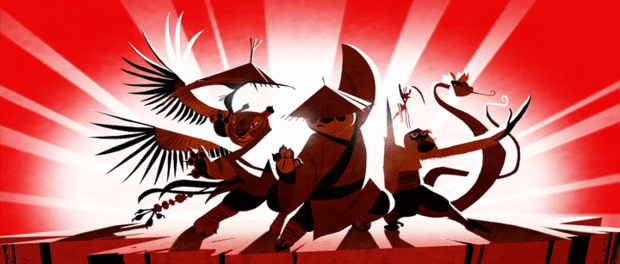I thought I’d share some of my experience and thoughts about writing screenplay outlines...
♦
I thought I’d share some of my experience and thoughts about writing screenplay outlines.
Here’s an idea I’ve found to be vital:
The outline is more important than the screenplay.
I believe this very strongly. It might sound odd at first, because what could be more important than the screenplay. A better question would be Which would be more important, a good outline or a bad screenplay?
With a bad outline, no matter how hard you work on the script it’s going to turn out poorly. But with a good outline, you may struggle, it may take months or years and many drafts, but if you follow your outline—and it really is a good outline—you will eventually get a good script. Even if the dialog isn’t terrific, and you’ve overwritten the action, if the outline is solid the script will be good.
Any good producer can see through the poor writing style to the gem of a plot beneath. Why do you think studios buy scripts and then immediately have them rewritten? It’s because underneath it all they saw a good plot.
Here’s another thing I’ve found to be true:
Bad Outline = Difficult Script.
One way to know if your outline isn’t up to snuff is if you find yourself having a hard time writing the script. In my experience, when the outline wasn’t tight I’ve struggled with the scripts. And when the outlines were well structured, the scripts were a breeze. They practically wrote themselves.
If you’ve done your job, and written a good outline, writing the screenplay should actually be very easy. All you have to do is flesh out the action and add the dialog.
Don’t ever make the mistake of thinking “I’ll fix it in the screenplay.” You won’t! You’ll find you’ve wasted a lot of time, and then you’ll go back to the outline.
I also find that when I take the extra time to write a tight, well-structured outline that much of the important dialog has already bubbled to the surface and I either include it in the outline or jot it down for future inclusion in the script.
Here’s a tip I’ll bet many writers may not have realized:
Never try to completely finish your outline.
In fact, you can’t totally finish your outline unless you intentionally don’t want the best screenplay. That’s because once you start to turn your outline into a screenplay you are bringing it to reality. The outline is just the underlying concepts. The screenplay is where those concepts become real in the writer’s creative imagination. You’ll find your characters starting to think and talk and change and grow on a level they did not do during the outline.
I find that writing the outline is a more analytical process, while writing the screenplay is more emotional and visceral. This is because when you write the screenplay you are literally giving life to the story and characters. If you write like I do you are granting life to your characters. You are placing them into a living, breathing world where they don’t just “rob the bank”, their hearts are pounding as they break in, see potential threats, shove guns into ribs, and all the cause-and-effect elements of life unfold around them.
If you try to include all of these things in your outline you will get bogged down in the details, many of which will have to be tossed out should you realize the scene doesn’t work.
Outlines are first written in broad strokes, then finer sequences, scenes and beats.
I start writing my outline in plot beats that are as simple as possible. I may be able to see the details in my mind, but I don’t write them yet.
- Po dreams he’s a great Kung Fu warrior.
- Po wakes to reveal he’s an obese panda who sells noodles.
- Po learns that a new Dragon Warrior is to be chosen.
- Po is ordered to sell noodles at the event.
- Po, through a series of klutzy screw-ups, is chosen as the new Dragon Warrior.
These are some of the simple opening beats of Kung Fu Panda. This is how I would initially lay them out if I was writing the outline. This simplicity allows me to get a broader view of the plot. If you write down the details at the start you can’t see the trees for the forest and will likely find yourself in a tangled mess of brambles.
Once you get the broad strokes down, and are happy with them, then you can flesh out the details.
It’s quite possible that some reworking of the outline will have to take place after you begin the screenplay, but I have found that if I’ve done a good job on the outline this either won’t happen, or if it does it will be minimal.
Of course, writing a good outline isn’t easy. In fact, it’s the most difficult part of screenwriting. You need to know all about how to build thematic, character and plot arcs that tie together seamlessly. It takes a lot of study and a great deal of practice. But once you get the hang of it, writing an outline is a great challenge and great fun.
I find it more fun than writing the screenplay. Well, except for those last two words...
FADE OUT.
©Jeffrey Scott, All Rights Reserved









